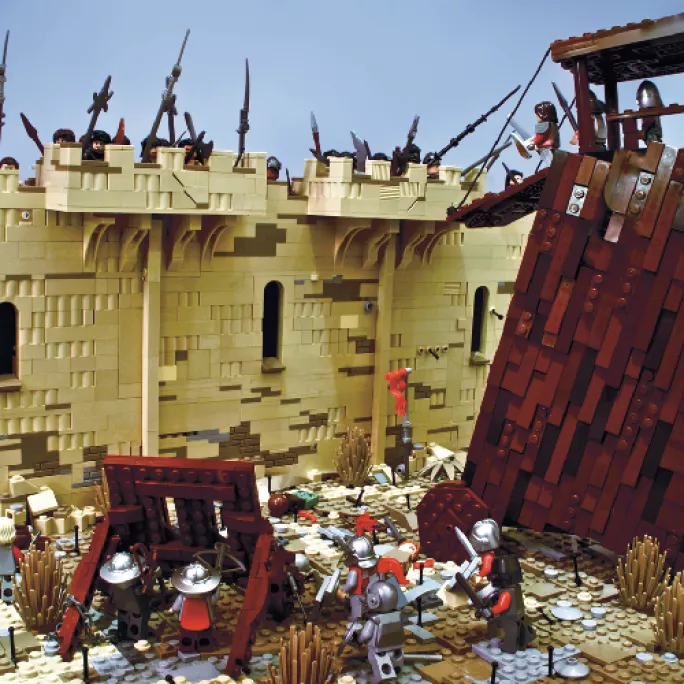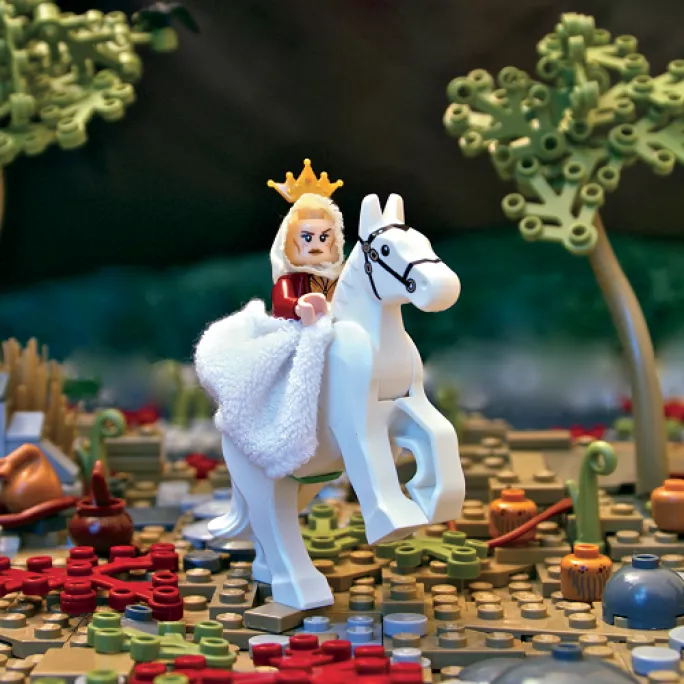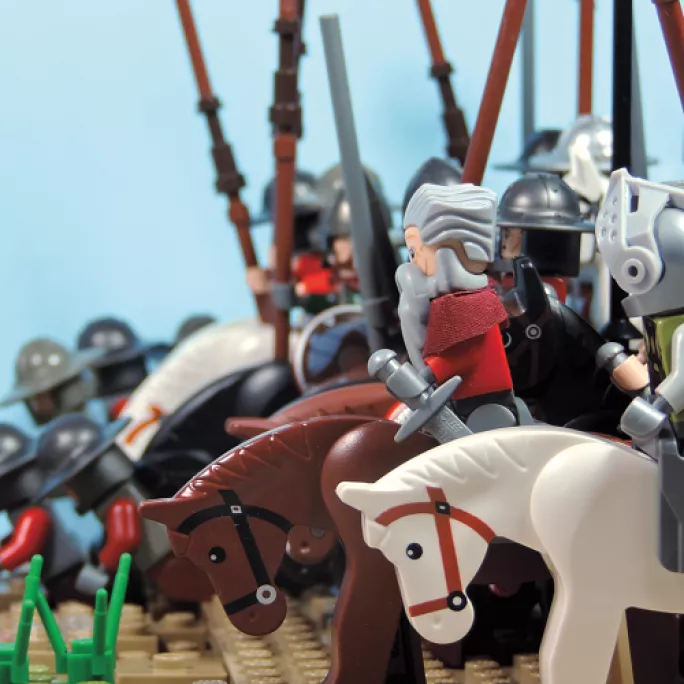Quiz: test your knowledge of Medieval history - the Lego version

There are kings, there are battles, there are revolts. And there are tiny pieces of plastic, which hurt when you tread on them.
This is Medieval Lego, a new book compiled by a 15-year-old schoolboy. Greyson Beights brought together Lego artists and academic historians to provide a small, plastic insight into the most significant events of the Middle Ages. Or, essentially, a million geek Christmases, all come at once.
If you think you know your medieval history - or your Lego - try this TES quiz, using images from the book.

What is this?
On 7 June 1099, after three years of marching, the Crusader army reached this city. Although it had set out with 60,000 men, the army was greatly reduced by previous battles, disease and fatigue. It was too small to surround the city completely, and had only one ladder. So the Crusaders constructed four-storey siege towers on wheels to roll up against the city wall. Duke Godfrey de Bouillon, who later ruled the city, sat on top of the northern siege tower, firing his crossbow. When the Crusaders broke into the city, they massacred the residents and rushed to worship at the Church of the Holy Sepulchre.

Who is this?
One of the most powerful women in medieval history, this woman held the balance between English and French royal power. As a child, she inherited a large region in the south-western corner of modern-day France. When she married the French king, Louis VII, these lands increased the size of his kingdom significantly. Eventually their marriage ended, for the ostensible reason that she and Louis were too closely related to be legally married. But she went on to marry the future King Henry II of England, to whom she was also closely related. Two of her sons, Richard (the Lionheart) and John, went on to succeed her second husband to the throne.

What is being set up here?
One of the most important inventions of the Middle Ages was a place where young men could continue their education, before going on to work for the church or the state. In England, the first of these was set up in a town already renowned as a centre of study, full of teachers of the arts, law and theology. In 1214, an agreement was drawn up among the residents of this town that they would charge students low rent, and sell food and drink to them at a fair price. This new arrangement was to be headed by an official known as a chancellor.

What are they signing here?
The name of this document is essentially Latin for “great big legal document”. It records the result of talks between King John and a group of barons and bishops who were unhappy with the way he was ruling, and with his imposition of heavy taxes. To prevent a war, the king agreed to make a series of promises, negotiated with nobles and clergymen. The final draft was sealed in the summer of 1215 and copies sent out across England. Immediately afterwards, King John asked the pope to overrule the document.

What is this?
This was the greatest natural disaster in European history, killing more than 50 per cent of the continent’s population in the space of three years. The disease was probably spread by the flea Xenopsylla cheopis, carried by black rats. Many towns and villages in England lost half their population, and some were wiped out entirely. Although the disease moved on to other parts of Europe in 1350, outbreaks recurred throughout the 15th and 16th centuries. Not until 1750 did England’s population return to its 1347 levels of 6 or 7 million.

Who is revolting?
With half the population wiped out, there was now a labour shortage. This drove wages up and rents down. Landowners, who dominated Parliament, reacted by passing laws to force wages down. Led by Wat Tyler and John Ball, the rebels marched on London and occupied the city for three days. They burned and looted, as well as killing hundreds of lawyers, foreigners and royal officials. The rebels met twice with the king, who promised to reform the government. As soon as the rebels left London, these promises were broken.

Who are these happy few?
Following a decades-long period of truce, the Hundred Years’ War was renewed in 1415 by this English king. Reviving demands for lands in France, he also reasserted a claim to the French throne, made by his great-grandfather Edward III at the beginning of the war. After losing many of his men to disease, his army was blocked by a much greater French force near a Normandy village. The result was one of the most celebrated battles in English history.
Medieval Lego, by Greyson Beights, is published by No Starch Press (www.nostarch.com)
Answers: the siege of Jerusalem; Eleanor of Aquitaine; Oxford University; the Magna Carta; the Black Death; the peasants; soldiers at the Battle of Agincourt.
Keep reading for just £1 per month
You've reached your limit of free articles this month. Subscribe for £1 per month for three months and get:
- Unlimited access to all Tes magazine content
- Exclusive subscriber-only stories
- Award-winning email newsletters



